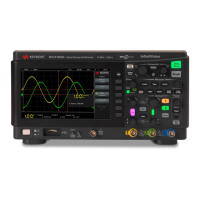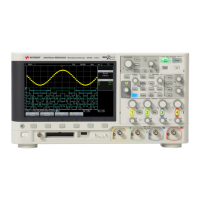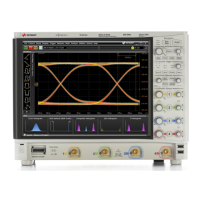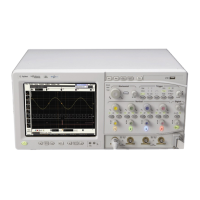96 Keysight InfiniiVision HD3-Series Oscilloscopes User's Guide
5 Math Waveforms
(If you want to calculate math functions on a longer record, you can save the
raw acquisition record and use programs like Excel or MATLAB to perform the
analysis.)
Waveform data for the acquisition time (that is, the time per division setting
multiplied by 10 divisions across the display) is saved to the memories. When the
oscilloscope analog-to-digital converter's (ADC, or digitizer) sample period yields
more data points than can be stored in the memory, some samples are thrown
away (decimated), and the effective (or actual) sample rate is reduced. This is why,
at greater time/div settings, the displayed sample rate decreases.
For example, suppose an oscilloscope's digitizer has a sample period of 1 ns
(maximum sample rate of 1 GSa/s) and a 1 M memory depth. At that rate, memory
is filled in 1 ms. If the acquisition time is 100 ms (10 ms/div), only 1 of every 100
samples is needed to fill memory. The effective sample rate becomes 10 MSa/s.
The decimator is configured to provide a best-estimate of all the samples that
each point in the record represents. There is no filtering in the decimation.
FFT (Spectral)
Analysis of
Analysis Record
Data
When the FFT operator is turned on, the decimation from the raw acquisition
record to the analysis record works on integer rate down-sampling. For example, a
raw acquisition record of 20M points and an analysis record of 64K points are
already set up with an integer rate decimation of 320 (20M/320 = 64K).
For FFT analysis, the decimated record is then zero-padded to 2
(X+1)
where 2
X
>=
record length. For the above example, the power of 2 greater than the record
length is 65536, so the record is zero-padded to 131072 points.
You can look at the FFT math function results on the oscilloscope to work
backward and find the un-zero-padded decimated record length as well as the FFT
length used after the zero-padding:
• First, we know:
• The FFT algorithm translates a time record of N equally spaced samples into
N/2 equally spaced lines in the frequency domain.
• The width of the FFT on the display is the maximum frequency in the FFT.
The maximum FFT frequency is also f
S
/2, where f
S
is the effective sample
rate of the decimated data. (Use the center/span or start/stop frequency
controls to display the maximum FFT frequency.)
• The FFT Resolution is displayed in the FFT menu. FFT resolution is also
known as the FFT bin width or a line in the frequency domain.
• Therefore, the un-zero-padded decimated record length is: f
S
x the acquisition
time (or 2 x max FFT freq x acquisition time).
• Also, the FFT length used after the zero-padding is: 2 x (maximum FFT
frequency)/(FFT Resolution).
All this works the same with analysis records greater than the 64K-point default.
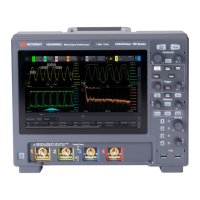
